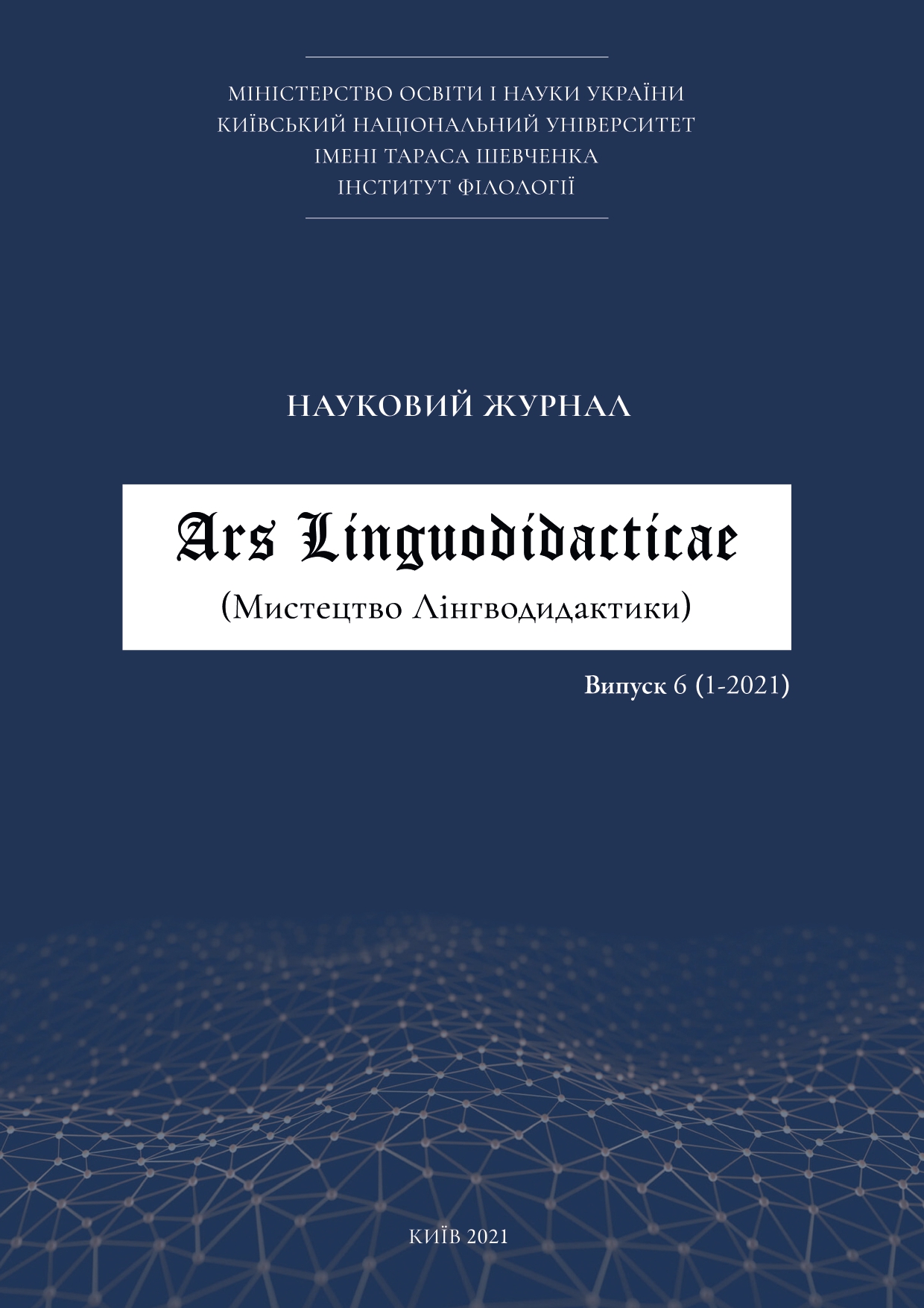CONTENT-AND-LANGUAGE INTEGRATED LEARNING AND TEACHING SCIENTIFIC UKRAINIAN TO 10TH-GRADE STUDENTS OF SECONDARY SCHOOL MAJORING IN NATURE AND MATHEMATICS
DOI:
https://doi.org/10.17721/2663-0303.2021.6.05Abstract
Background. More and more secondary school students in Ukraine and Europe are opting nowadays to stream for Nature and Mathematics, which is preconditioned by the increased demand for the professionals in these areas. In this context, Scientific Ukrainian could be packaged into content learning of a range of science disciplines such as Physics, Mathematics, Chemistry, and others if the appropriate CLIL framework is provided both for contact and distant learning and teaching. As the researchers claim (D.Koyl & D.Marsh), it is the development of speech operations and actions that affects knowledge and skills accumulation on the content level.
Purpose: The purpose of the article is to revisit the instructional capacities of Scientific Ukrainian based on the syllabi and textbooks for the 10th-grade secondary school students majoring in nature and mathematics. The aim is to ground the dual focus on Scientific Ukrainian and content learning in upper- secondary school.
Results and Discussion: Our theoretical speculations have led the authors to the conclusion that the language component of learning and teaching Scientific Ukrainian to 10th grade students should involve lexicography and working with dictionaries, lexicology and mastering the terminology, text search in media resources and its analysis, syntax of the scientific language and scientific text production. According to our observations, most Ukrainian 10thgrade secondary school students majoring in nature and mathematics are keen to master scientific Ukrainian for future careers related to the fields of Physics, Chemistry, Biology and Mathematics. The distant CLIL instruction was carried out with the involvement of platforms and tools such as GoogleDocs, Zoom, Padlet, Prezi, Kahoot, Quizlet. The empirical part of the study, with 26 10th- grade students and their teacher of Ukrainian participating, has clearly demonstrated the advantages of CLIL in enhancing both content learning and language competence. Despite positive results observed, more research efforts should be channeled to the development of the criteria to assess every content component of Scientific Ukrainian as well as to enhancing cooperation between content and language teachers to create opportunities for using the new language resources by students in curriculum planning.
Key words: content-and-language integrated learning, Scientific Ukrainian, distant teaching and learning, nature and mathematics.
Downloads
Published
How to Cite
Issue
Section
License

This work is licensed under a Creative Commons Attribution-ShareAlike 4.0 International License.
This work is licensed under a Creative Commons Attribution-NonCommercial 4.0 International License.
Copyright policy according to the terms of the license: Creative Commons "Attribution-NonCommercial" 4.0 International (CC BY-NC 4.0).
Authors who publish their articles in "Ars Linguodidacticae" (Open Access Journal) retain the following rights:
- The authors retain the copyright of their article and grant the Ars Linguodidacticae journal the right to first publish the manuscript of their article under the Creative Commons (CC BY-NC 4.0) Attribution License, which allows others to freely distribute the published work with mandatory reference to the author of the original work and first original publication in the Ars Linguodidacticae journal. An indication of the retention of the copyright of the work is provided on the title page of the article.
- The authors reserve the right to enter into separate contracts for the non-exclusive distribution of their article as published in Ars Linguodidacticae (e.g., placing the article in electronic libraries, archives and catalogs or publishing it as part of institute collections and monographs), provided that a full reference to the first original publication in Ars Linguodidacticae is given.
- The policy of the "Ars Linguodidacticae" journal allows and encourages authors to post a manuscript both before and during editorial processing, as this promotes productive scientific discussion and has a positive effect on the speed and dynamics of citing the article.
The editorial board reserves publishing rights to:
- the collated original articles and to the entire issue of the journal.
- the design of the journal and original illustrative and supplementary materials.
- the reprint reprints of the Journal in printed and electronic form.
The copyright policy is carried out according to the terms of the license: Creative Commons "Attribution-NonCommercial" 4.0 International (CC BY-NC 4.0).
For more information, please read the full text of the CC BY-NC 4.0 Public License.
Creative Commons Attribution-NonCommercial 4.0 International License.


